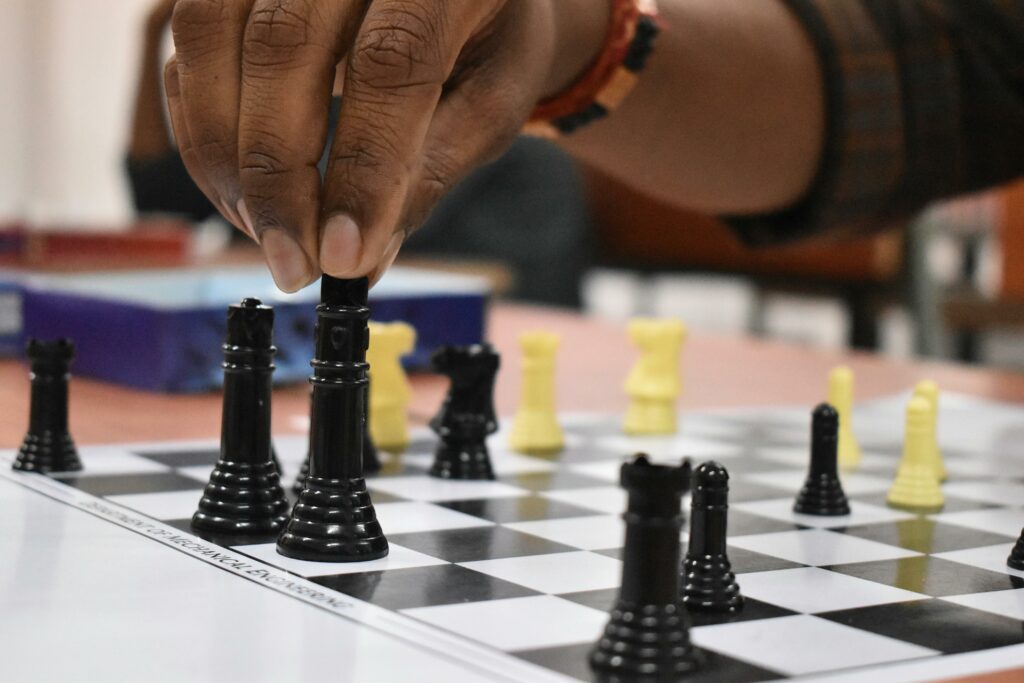Dear blog reader,
This month we are joined by Professor Ramona Houmanfar, someone who has fully embraced multi-disciplinarity in her research career, including an important collaboration with the School of Medicine in her home university, University of Nevada, Reno (UNR). This kind of collaborative effort, both within and across disciplines is exactly what we are seeking to emphasise within this blog series. We are particularly enthused by Ramona’s emphasis on socio-cultural issues and the application of behavioral systems analyses to this work, and in particular relevant social issues. So, without further ado, over to you, Ramona!
Colin and Dermot
About the author:

Ramona Houmanfar is Professor of Psychology and the Director of the Behavior Analysis Program at the University of Nevada, Reno (UNR). She currently serves as the trustee of the Cambridge Center for Behavioral Studies, Chair of the Organizational Behavior Management Section of Cambridge Center for Behavioral Studies, Editorial Board member of the Journal of Organizational Behavior Management, and Behavior & Social Issues, and Coordinator of the Publication Board at the Association for Behavior Analysis International (ABAI). Dr. Houmanfar has served as the Editor of the Journal of Organizational Behavior Management, senior co-chair of the ABAI convention, Director of the Organizational Behavior Management Network, President of the Nevada Association for Behavior Analysis, and Co-Coordinator of the Diversity, Equity, and Inclusion (DEI) board at ABAI. Ramona’s expertise in behavioral systems analysis, cultural behavior analysis, and contextual behavioral science have guided her research associated with implicit bias, cooperation, and value based governance. She has published over 80 peer reviewed publications, and three co-edited books titled “Organizational Change” (Context Press), “Understanding Complexity in Organizations”, “Leadership & Cultural Change (Taylor & Francis Group), and “Applied Behavior Science in Organization” (Taylor & Francis Group) sponsored by ABAI. Other accomplishments include being awarded ABAI and Association for Contextual Behavioral Science Fellow designations.
From Theory to Research & Applications in Organisations and Beyond
I received my Ph.D. from University of Nevada, Reno (UNR) and joined the faculty in the Department of Psychology at UNR in 1998. As a graduate student, I experienced exceptional mentoring, and continue to promote the “junior colleague” approach embraced by the Program. Such graduate training involves modelling and instruction in a variety of professional skills and roles and is a common feature of many fine behavior analysis programs. In keeping with this tradition, I developed and lead a collaborative research team called the Performance System Technologies (PST) Lab which engenders theoretically driven investigations that are informed by interdisciplinary research and systemic applications in medical education and engineering.
My academic and research work focuses in the area of organizational behavior management, and cultural behavior analysis with an emphasis on behavioral systems analysis, and verbal behavior. As I see it, language plays a fundamental role in organized cultural groups which use rules to govern activities. Based on organizational literature, the objective of communication is often to guide employee behavior, both individually and collectively, to be more efficient and productive. This sort of communication is generally in the form of rules that the organizational leaders assume will have an impact on employee behavior. In many cases, the source of the rule may have quite a different history and perspective from those of the rule followers, and this discrepancy may explain the often-seen mismatch between the rule author’s objective of stating a rule and the listeners’ comprehension of what is expected. The leaders’ intended explicitness and accuracy of rules may generate environmental ambiguity for the rule followers. In short, environmental ambiguity can occasion faulty problem-solving behavior, which in turn may lead to the listener-generation of inaccurate organizational rules, and poor performance. Conversely, explicit and accurate rules may minimize environmental ambiguity that can enhance performance (e.g., high reliability organizations with focus on minimal amount of response variability) but hinder innovation and problem solving among dynamic teams in organizations. My research team and I (PST Lab at UNR) have conceptually discussed and demonstrated experimentally ways levels of environmental ambiguity can be managed via design of rule generation (Ghezzi et al., 2020; Houmanfar & Johnson, 2003; Houmanfar et al., 2009; Maraccini et al., 2016; Rafacz et al., 2018; Smith et al. 2011; 2012).

My interest in cultural psychology has also influenced the development of my conceptual and experimental analyses of complex socio-cultural phenomena with the primary focus on rule governance, leadership communication, and decision making (Houmanfar et al., 2009; 2010; 2015; 2024). A selected sample of such conceptual analyses include publications on the function of leaders in organizations (Esquierdo-Leal & Houmanfar, 2021; Houmanfar et a., 2015; Maraccini et al., 2016), and their roles as related to socio-cultural phenomena such as volunteerism, food consumption, martyrdom, and terrorism (Houmanfar et al., 2015; Wilhite & Houmanfar, 2015; Houmanfar & Ward, 2012). The collaborations resulting in these manuscripts were influenced by previous publications on cultural selection, religion plus role of relational networks and rule governance in cultural change (Houmanfar et al., 2024; Houmanfar et al., 2010; Houmanfar, et al., 2009; Houmanfar & Johnson, 2003; Houmanfar, et al., 2001).
My focus on Behavioral Systems Analysis, Cultural Behavior Analysis, and relational account of verbal behavior have guided my pursuit of interdisciplinary collaborations throughout my academic career at UNR. I have been fortunate to work with many experts from the fields of engineering and medical education. The constant factors in my interdisciplinary career is the ongoing interest in learning from other experts, and contributing to the group success.

For example, since 2010 my research team (PST Lab) and I have collaborated with the UNR School of Medicine (UNR Med) on development and implementation of an Acceptance and Commitment Training (ACT; Hayes et al., 2012) curriculum (a non-therapeutic variation of Acceptance and Commitment Therapy) as part of the four-year undergraduate medical education curricula at UNR Med. What started as a means of documenting and studying a major curricular reform process evolved over time. As we became more familiar with each other, we were able to utilize our relative strengths to expand into new and innovative collaborative efforts. We have provided a unique behavior scientific perspective (informed by Contextual Behavior Science, Behavioral Systems Analysis, and Cultural Behavior Analysis) of challenges that face medical education and healthcare. This endeavor has resulted in the development of a Modified Implicit Relational Assessment Procedure (M-IRAP) for identifying implicit bias pertaining to burnout, obesity, race, gender, socio-economic status, life style (including addiction), and cooperation. The assessment process has informed our systematic integration of an empirically supported framework (i.e., ACT) into the mandatory curriculum pertaining to burnout, and patient care in the context of healthcare. Multiple cohorts (approximately 70 students per cohort) of medical students have completed the M-IRAP three times throughout their curriculum experience at UNR Med over the last decade. This systematic and systemic implementation of IRAP has provided a series of longitudinal analyses that have informed the impact of the ACT curriculum on measures of burnout bias, psychological flexibility, and student performance (Smith et al., 2022a; 2022b; Szarko et al., 2022).
You might be wondering about the large scale use of the M-IRAP in an applied setting, and how we have acquired medical leadership interests in its use as the primary tool for measurement of implicit bias. In their 2017 Implicit Bias Review, The Kirwan Institute for the Study of Race and Ethnicity define implicit bias as “the attitudes or stereotypes that affect our understanding, actions, and decisions in an unconscious manner; activated involuntarily, without awareness or intentional control; can be either positive or negative; everyone is susceptible” (p. 10). From a behavior scientific perspective, and Relational Frame Theory (RFT; Hayes et al., 2001) in particular, the term arguably translates most synonymously with the definition of a brief and immediate relational response (BIRR) as specified within the Relational Elaboration and Coherence (REC) model (Barnes-Holmes, et al., 2010). The REC model views relational responses:
“like all behaviors, [they] unfold across time. Thus, when a stimulus is encountered, a relational response may occur relatively quickly and be followed by additional relational responses. These additional responses may occur toward the stimulus itself or toward the initial response to the stimulus. With sufficient time, these additional relational responses will likely form a coherent relational network”
(Barnes-Holmes, et al., 2010, p. 102).
The REC model classifies two categories of arbitrarily applicable relational responding: BIRRs are behaviors which occur consistently under time pressure and are often synonymous with features typically used to describe the cognitive construct “implicit bias”; extended elaborated relational responses (EERRs) are responses that occur in the absence of time pressure and are often synonymous with the features typically used to describe the cognitive construct “explicit bias”. In this vein, Hughes & Barnes-Holmes (2013) note: “It is important to appreciate that both are behavioral patterns, and thus they may interact in a dynamic manner” (p. 102).

Implicit bias can be behaviorally interpreted as verbal responses that occur consistently under relatively quick time-pressure (e.g., ~3 seconds or less latency of responding toward the verbal referent of interest; Baker et al., 2015). The functional relation between burnout and implicit bias arguably has important implications for human adaptability and resilience. In other words, when individuals are placed under conditions conducive to long-term states of stress and fatigue, the symptoms of burnout are likely to emerge—which, if detected and measured, can be used as a form of organizational feedback to those in charge of policy decision-making and organizational-level remediation (Houmanfar & Szarko, 2022). More specifically, when individuals are experiencing symptoms of burnout (i.e., emotional exhaustion, depersonalization of others, and a lack of personal efficacy), they may become less sensitive to the direct acting contingencies of their present moment experiences, and may be more likely to act with respect to deeply conditioned social biases (i.e., BIRRs).
As I mentioned earlier, we have utilized the M-IRAP to inform our design of specific curricular interventions to address specific areas of social bias at UNR Med. Our research driven training programs are developed to teach medical students how to manage and augment their implicit biases toward their experiences of burnout, and interactions with diverse members of medical teams (Maraccini et al., 2018). In a recent publication by Szarko et al. (2022), we showed a longitudinal analysis of measures pertaining to psychological inflexibility in relation to measures of positivity bias (identifying with words such as competent, enthusiastic, caring, and positive) and negativity bias (identifying with words such as callous, drained, overwhelmed, and negative) that were collected at three time points over the first two years of medical school. ACT was provided between time one and two, but no ACT was provided between time two and three. Results demonstrated statistically significant improvements, specifically, for students starting medical school with clinically relevant levels of distress. Positivity bias and negativity bias were measured with a burnout-themed Modified-IRAP (MD-IRAP). Positivity bias maintained across all three time points, despite an increase in negativity bias. In addition, our recent analyses (Smith et al., 2022) suggest that greater psychological flexibility is related to greater implicit identification with positive words, greater pro-cooperation bias, and higher exam scores (~2%). These findings have had significant impact on the way UNR Med leadership approach their curriculum in bias and burnout and has allowed the development of specific preventive measures to manage these issues in medical education.

In summary, the abovementioned example represents my interdisciplinary collaboration informed by previous research on communication in organizations (Chase et al., 2013; Smith, Houmanfar, & 2011; Smith et al., 2012; Johnson et al., 2010), and the on-going research with a team of interdisciplinary partners (i.e., academic leaders in medical education). It is important to note that the partnership with UNR Med has resulted in a number of graduate assistantships, three doctoral dissertation projects, and many academic presentations at academic conferences. In addition, the positive impact of this collaborative effort on systemic outcomes (burnout measures and academic performance, and inter-professional communication), and scholarly publications have resulted in career advancements of many faculty members at UNR Med faculty, and a number of career opportunities for my doctoral alumni in the medical industry. In short, this interdisciplinary collaboration which has evolved into a partnership with a discipline previously thought to be unrelated to medical education has widened our field of vision in a way that will make similar non-traditional collaborations more likely in the future. We see this innovative effort as something other medical schools can adopt by expanding their own field of vision to include similar collaborations within and outside their parent institution.
I hope this overview of my interdisciplinary efforts captures Drs. Colin Harte and Dermot Barnes-Holmes’ objective of broadening the theme of this ABAI blog with the primary focus on engendering collaboration among scientific groups interested in human language and cognition. I thank them both for the opportunity to showcase my approach to collaboration. I look forward to further discussions about the expansion of our impact within and outside of behavior analysis.
References
Baker, T., Schwenk, T., Piasecki, M., Smith, G. S., Reimer, D., Jacobs, N., Shonkwiler, G., Hagen, J., Houmanfar, R.A. (2015). Cultural change in a medical school: A data-driven management of entropy. Journal of Organizational Behavior Management, 35, 95–122. https://doi.org/10.1080/01608061.2015.1035826
Barnes-Holmes, D., Barnes-Holmes, Y., Stewart, I., & Boles, S. (2010). A sketch of the implicit relational assessment procedure (IRAP) and the relational elaboration and coherence (REC) model. The Psychological Record, 60, 527-542. https://doi.org/10.1007/BF03395726
Chase, J., Houmanfer, R., Hayes, S., Ward, T., Plumb, J., & Follette, V. (2013). Values are not just goals: Online ACT-based values training adds to goal setting in improving undergraduate college student performance. Journal of Contextual Behavioral Science, 2, 79-84.
Esquierdo-Leal, J. L., & Houmanfar, R. A. (2021). Creating inclusive and equitable cultural practices by linking leadership to systemic change. Behavior Analysis & Practice, https://doi.org/10.1007/s40617-020-00519-7
Ghezzi, E.L., Houmanfar, R.A., & Crosswell, L (2020). The motivative augmental effects of verbal stimuli on cooperative and conformity responding under a financially competing contingency in an analog work task. The Psychological Record, 70, 411-431. https://doi.org/10.1007/s40732-020-00400-7
Hayes, S.C., Strosahl, K. D., & Wilson, K.G. (2012). Acceptance and Commitment Therapy: A Process and Practice of Mindful Change (2nd ed.). Guilford.
Houmanfar, R.A, Alavosius, M. A., Ghezzi, E. L., & Olla, R. (2024). Verbal repertoires & contextual factors in cultural change. The Psychological Record. https://doi.org/10.1007/s40732-024-00587-z
Houmanfar, R. A., Alavosius, M.P., Morford, Z.H., Herbst, S.A., & Reimer, D. (2015). Functions of organizational leaders in cultural change: Financial and social well-being. Journal of Organizational Behavior Management, 35, 4-27. https://doi.org/10.1080/01608061.2015.1035827
Houmanfar, R., A., Ardila Sánchez, J. G., & Alavosius, M. P. (2020). Role of cultural milieu in cultural change: mediating factor in points of contact. In T. Cihon, & M. A. Mattaini (Eds.). Behavior Science Perspectives on Culture and Community. Springer
Houmanfar, R., Hayes, L. J., & Fredericks, D. W. (2001). Religion and cultural survival. Psychological Record, 51, 19-37.
Houmanfar, R. A., Rodrigues, N. J., & Smith, G. S. (2009). Role of communication networks in behavioral systems analysis. Journal of Organizational Behavior Management, 29, 257-275. https://doi.org/10.1080/01608060903092102
Houmanfar, R. A., Rodrigues, N. J., & Ward, T. A. (2010). Emergence and metacontingency: Points of contact and departure. Behavior and Social Issues, 19, 53-78. https://doi.org/10.5210/bsi.v19i0.3065
Houmanfar, R. A., & Szarko, A. (2022). Utilizing Values-Based Governance to Promote Well-Being in Organizations and Beyond. In Houmanfar R. A, Fryling M., Alavosius M. P. (Eds.) Applied Behavior Science in Organizations: Consilience of Historical and Emerging Trends in Organizational Behavior Management, 291-315. Taylor & Francis Group.
Houmanfar, R. A., & Johnson, R. (2003). Organizational implications of gossip and rumor. Journal of Organizational Behavior Management, 23, 117-138. https://doi.org/10.1300/J075v23n02_07
Houmanfar, R., & Ward, T. A. (2012). An interdisciplinary account of martyrdom as a religious practice. Latin American Journal of Psychology, 44, 65-75.
Hayes, S.C., Barnes-Holmes, D., & Roche, B. (2001). Relational Frame Theory: A Post-Skinnerian Account of Human Language and Cognition. Plenum.
Hughes, S., & Barnes-Holmes, D. (2013). A functional approach to the study of implicit cognition: the implicit relational assessment procedure (IRAP) and the relational elaboration coherence (REC) model. In S. Dymond & B. Roche, Advanced in relational frame theory: research and application. (pp. 95-125). New Harbinger Publications.
Hughes, S., & Barnes-Holmes, D. (2016). Relational frame theory: The basic account. In R. D. Zettle, S. C. Hayes, D. Barnes-Holmes, & A. Biglan (Eds.), The Wiley handbook of contextual behavioral science (pp. 129–178). Wiley-Blackwell.
Johnson, R. A., & Houmanfar, R., & Smith, G. S. (2010). The effect of implicit and explicit rules on customer greeting and productivity in a retail organization. Journal of Organizational Behavior Management, 30, 38-48. https://doi.org/10.1080/01608060903529731
Kirwan Institute for the Study of Race and Ethnicity (2017). Implicit Bias Review. The Ohio State University. Columbus, OH.
Maraccini, A. M., Houmanfar, R. A., & Szarko, A. (2016). Motivation and complex verbal phenomena: Implications for organizational research and practice. Journal of Organizational Behavior Management, 36, 282-300.
Maraccini, A. M., Houmanfar, R. A., Kemmelmeier, M., Piasecki, M., & Slonim, A. D. (2018). An inter-professional approach to train and evaluate communication accuracy and completeness during the delivery of nurse-physician student handoffs. Journal of Interprofessional Education & Practice, 12, 65-72. https://doi.org/10.1016/j.xjep.2018.06.003
Rafacz, S., Houmanfar, R., & Smith, G., Levin, M. (2018). Assessing the effects of motivative augmentals, pay for-performance, and implicit verbal responding on cooperation. The Psychological Record, 69, 49-66. https://doi.org/10.1007/s40732-018-0324-x
Smith, G. S., Houmanfar, R., & Louis, S. J. (2011). The participatory role of verbal behavior in an elaborated account of metacontingency: From theory to investigation. Behavior and Social Issues, 20, 112–145.
Smith, G. S., Houmanfar, R., & Denny, M. (2012). Impact of rule accuracy on productivity and rumor in an organizational analog. Journal of Organizational Behavior Management, 32, 3-25. https://doi.org/10.1080/01608061.2012.646839
Smith, G.S., Houmanfar, R.A., Jacobs, N.N., Froehlich, M., Szarko, A.J., Smith, B.M., Kemmelmeier, M., Baker, T.K., Piasecki, M., & Schwenk, T.L. (2022a). Assessment of medical student burnout: Toward an implicit measure to address current issues. Advances in Health Sciences Education. https://doi.org/10.1007/s10459-021-10089-0
Smith, G.S., Houmanfar, R.A., Assemi, K., Szarko, A.J., Smith, B.M., Jacobs, N.N., Piasecki, M., Baker, T. (2022b). Examining the Relationships between Psychological Flexibility, Implicit Burnout, and Cooperativeness among Medical Students. Paper presented at the 48th Annual Convention for the Association for Behavior Analysis International. Boston, MA.
Szarko, A.J., Houmanfar, R.A., Smith, G.S., Jacobs, N.N., Smith, B.M., Assemi, K., Piasecki, M., & Baker, T.K. (2022). Impact of Acceptance and Commitment Training on Resilience and Burnout in Medical Education. Journal of Contextual Behavioral Science, 23, 190-199. https://doi.org/10.1016/j.jcbs.2022.02.004
Wilhite, C. J. & Houmanfar, R. (2015). Mass news media and American culture: An interdisciplinary approach. Behavior and Social Issues, 24, 88-110.

Kudos! Collaborating across disciplinary lines might be the most direct route to elevating behavior analysis.